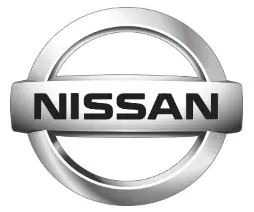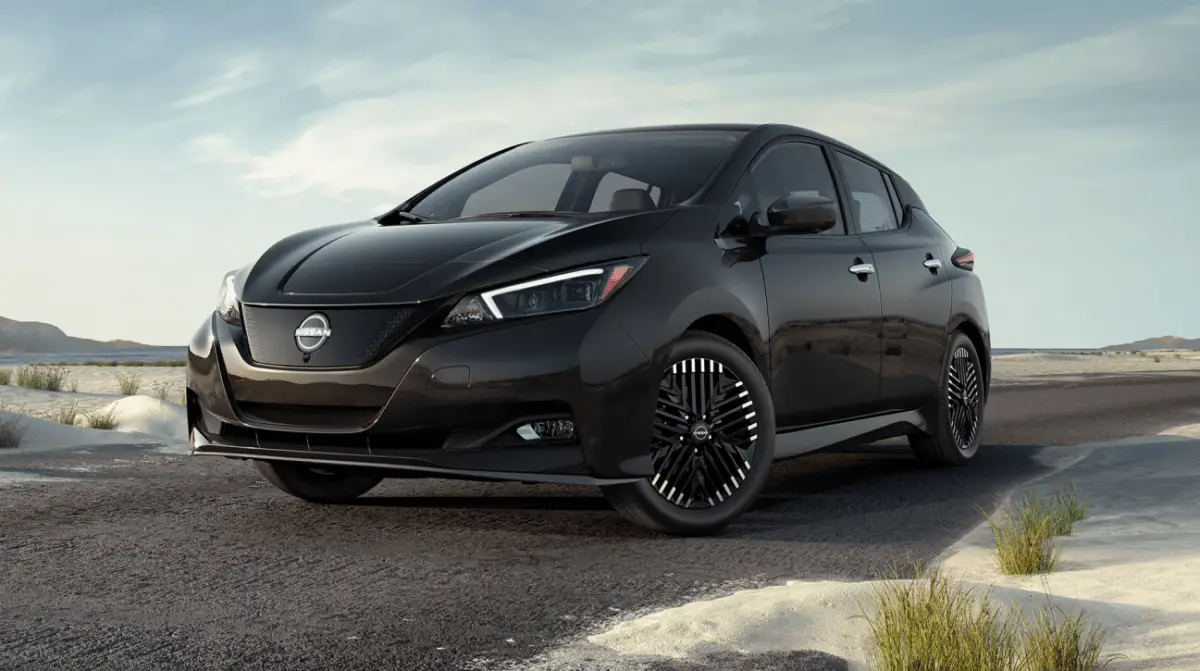
2024 Nissan Leaf User Manual
In the field of electric vehicles (EVs), the 2024 Nissan Leaf is still a pathfinder since it provides those who care about the environment with an affordable and sustainable driving option. Nissan’s dedication to zero-emission mobility is embodied in the Leaf’s unique and aerodynamic design. Its interior offers a cozy and technologically advanced cabin with a variety of contemporary comforts and an easy-to-use infotainment system. The electric drivetrain of the 2024 Leaf provides effective performance and a range of battery choices to accommodate a variety of driving requirements. The 2024 Nissan Leaf is still a dependable and environmentally responsible option for anyone who wants to benefit from electric mobility while still having a beneficial impact on the environment as the EV market changes.
EFFICIENT USE OF YOUR VEHICLE
RANGE
The distance you can drive the vehicle (range) varies considerably depending upon the available charge, weather, temperature, usage, battery age, topography, and driving style. Refer to the Monroney label (window sticker) for the official EPA range. Your actual range will vary and could be significantly less, either initially or as the battery ages and with use over time. For additional information, see “Improve driving range” (P. EV-22) for information on the factors that affect vehicle range and how to use the vehicle to maximize vehicle range.
IMPROVE DRIVING RANGE
Vehicle range depends on a number of factors.
Actual vehicle range will vary depending upon:
- Speed,
- Vehicle load,
- Electrical load from vehicle accessories,
- Traffic and road conditions,
- Distance driven without stopping,
- Usage,
- Driving style,
- Battery age,
- Weather or temperature,
- Topography,
- Charging habits.
NISSAN recommends the following driv-ing habits to help maximize vehicle range:
Before driving:
- Follow recommended periodic mainte-nance.
- Keep tires inflated to correct pressure.
- Keep wheels in correct alignment.
- Pre-heat or pre-cool the interior cabin while the vehicle is charging.
- Remove unnecessary cargo from the vehicle.
While driving:
- Drive in ECO mode
- The ECO mode helps reduce power consumption by reducing acceleration when compared to the same accelerator pedal position in the D (Drive) position (normal mode).
- Drive at a constant speed. Maintain cruising speeds with constant accelerator positions or by using cruise control when appropriate.
- Accelerate slowly and smoothly. Gently press and release the accelerator pedal for acceleration and deceleration.
- Drive at moderate speeds on the highway.
- Avoid extending highway driving with mul-tiple quick charges.
- Avoid frequent stopping and braking. Main-tain a safe distance behind other vehicles.
- Turn off the air conditioner/heater when it is not necessary.
- Select a moderate temperature setting for heating or cooling to help reduce power consumption.
- Use the air conditioner/heater and close windows to reduce drag when cruising at highway speed.
- Vehicle range may be substantially reduced in extremely cold conditions (for example, -4°F (-20°C)).
- Using the climate control system to heat the cabin when the outside temperature is below 32°F (0°C) uses more electricity and affects vehicle range more than when using the heater when the temperature is above 32°F (0°C).
- When it is cold, use the steering wheel heater in substitution for the heater/air conditioner. The steering wheel heater consumes less power than the heater/air conditioner.
- Release the accelerator pedal to slow down and do not apply the brakes when traffic and road conditions allow.
- This vehicle is equipped with a regenerative brake system. The primary purpose of the regenerative brake system is to provide some power to recharge the Li-ion battery and extend the driving range. A secondary benefit is “engine braking” which operates based on Li-ion battery conditions. In the D (Drive) position, when the accelerator is released, the regenerative brake system provides some deceleration and some power to the Li-ion battery.
- LI-ION BATTERY LIFE
The Li-ion battery’s ability to hold a charge, like all batteries, decreases with battery age and usage which results in decreased vehicle range when compared to the vehicle range when the vehicle was new. This is normal and expected, and does not indicate a malfunction of the vehicle or Li-ion battery. The Li-ion battery’s ability to hold a charge can be affected by how you drive the vehicle, store the vehicle, you charge the Li-ion battery and the Li-ion battery temperature during vehicle operation and charging.
To maximize the battery’s useful life, use the following driving and charging habits where possible:
- Avoid exposing a vehicle to extreme ambient temperatures for extended periods.
- Avoid storing a vehicle in temperatures below −13°F (−25°C) for more than seven days.
- Avoid leaving your vehicle for more than 14 days when the Li-ion battery available charge gauge reaches zero or near zero (state of charge).
- Allow the vehicle and Li-ion battery to cool down after use before charging.
- Park/store your vehicle in cool locations out of direct sunlight and away from heat sources.
- Avoid sustained high battery temperatures (caused, for example, by exposure to very high ambient temperatures or ex-tending highway driving with multiple quick charges.
- Use the normal charging or trickle charging methods to charge the Li-ion battery and minimize the use of public Fast Charge or Quick Charger.
- Moderate driving.
- Use of ECO mode.
- Do not operate the charging timer repeatedly while the charge connector is connected to the vehicle after the Li-ion battery charging is completed. Doing so may discharge the 12-volt battery.
- The power of the Li-ion battery can be checked on the Li-ion battery available charge gauge.
LI-ION BATTERY MAINTENANCE
In addition to the regular maintenance recommended by NISSAN, the LEAF requires some special Li-ion battery inspections.
- For additional information, refer to the NISSAN Warranty Information Booklet for significant limitations, exclusions and possible voiding of your warranty result-ing from failure to have these necessary inspections, repairs and/or adjustments performed.
- For a detailed explanation of the Li-ion battery inspection and intervals, see “EV maintenance schedules (EM57 electric motor)
METERS AND INDICATORS
Various meters and gauges related to the EV functions are displayed in the vehicle information display.
Master warning light
The master warning light (red or yellow) 1O illuminates when messages are displayed on the vehicle information display.
Li-ion battery temperature gauge
This gauge 2O displays the temperature of the Li-ion battery.
Power meter
This meter displays the actual traction motor power consumption and the regenerative brake power provided to the Li-ion battery.
Driving range
This indicator displays the estimated driv-ing range (calculated based on a program that accounts for current driving style and operational conditions) that can be driven before recharging is necessary.
Li-ion battery available charge gauge
This indicator displays the available Li-ion battery capacity remaining to drive the vehicle. The EV unique information is displayed on the vehicle information display as well.
Warning and indicator lights
The EV system uses the following EV-specific warning and indicator lights:
- Master warning light (red)
- Master warning light (yellow)
- 12-volt battery charge warning light
- Plug-in indicator light
- READY to drive indicator light
- Power limitation indicator light
- EV system warning light
- Electric shift control system warning light
- Brake system warning light (yellow)
- Approaching Vehicle Sound for Pedestrians (VSP) system OFF warning light
APPROACHING VEHICLE SOUND FOR PEDESTRIANS (VSP) SYSTEM
The Approaching Vehicle Sound for Pedestrians (VSP) system is a function that uses sound to alert pedestrians of the presence of the vehicle when it is being driven at a low speed. When the vehicle starts to move, it produces a sound. The sound stops when the vehicle’s speed is more than 25 mph (40 km/h) while accelerating. The sound starts when the vehicle speed is less than 22 mph (35 km/h) while decel-erating.
WARNING
- If the sound cannot be heard, pedestrians may not notice the oncoming vehicle, which may cause an accident resulting in serious injury or death. It is recommended that you immediately visit a NISSAN-certified LEAF dealer for VSP system inspection.
- If the VSP system OFF warning light illuminates while the power switch is in the ON position, or in the READY to drive position, it may indicate the VSP system is not functioning properly. Have the VSP system checked. It is recommended that you visit a NISSAN-certified LEAF dealer for this service.
NOTE:
The volume of the (VSP) sound cannot be raised or lowered.
ELECTRIC SHIFT CONTROL SYSTEM
This vehicle is equipped with an electric shift control system. This control system has three features:
- Smooth and easy shift lever operation.
- To place the vehicle in the P (Park) position, push the P (Park) position switch on the shift lever.
- The vehicle automatically applies the P (Park) position when the power switch is placed in the OFF position.
LED HEADLIGHT (low beam) (if so equipped)
This vehicle uses an LED headlight for the headlight low beam. The LED headlight has the following features:
- Low power consumption
- The shape is very compact.
It is recommended that you visit a Nissan-certified LEAF dealer to replace the headlight.
DRIVING RANGE
On the vehicle information display or navigation system screen (if so equipped), you can check the estimated distance the vehicle may be driven with the available Li-ion battery charge. For additional information, refer to the NissanConnect® Manual.
FAQs
The 2024 Nissan Leaf is an electric vehicle (EV) produced by Nissan.
The 2024 Leaf may feature updates and enhancements in design, technology, and range compared to previous model years.
The Leaf typically seats up to five passengers.
The range of the 2024 Leaf will depend on the specific battery option, but it is designed to provide a practical range for daily commuting and city driving.
Yes, the Leaf is typically available with different battery options, allowing buyers to choose the range that best suits their needs.
The Leaf features a contemporary exterior design with a focus on aerodynamics and an interior designed for comfort and sustainability.
The 2024 Leaf is expected to come equipped with advanced infotainment and connectivity features, including a touchscreen display, smartphone integration, and EV-specific information.
Nissan may offer various trim levels of the Leaf, with some offering enhanced performance attributes and features.
Pricing for the Leaf may vary depending on trim levels, battery options, and regions, but it is typically positioned as a competitive electric vehicle.
Nissan typically offers a standard warranty package, including coverage for the vehicle’s components and systems. Specific details may vary by market.
The specific release date may vary by region, but it’s generally expected to become available in 2023 or 2024.
Yes, the Leaf is expected to offer advanced driver-assistance features to enhance safety and convenience.
The Leaf competes by offering a balance of affordability, practicality, and sustainable mobility, targeting buyers seeking an accessible electric vehicle.
The Leaf can typically be charged using standard home charging equipment or at public charging stations. Some models may also offer fast-charging capabilities for quicker charging times.
While the Leaf is designed for daily commuting and urban driving, its range may make it suitable for some longer trips, especially with access to charging infrastructure.
User Manual
DownloadManuals: https://www.nissanusa.com/owners/ownership/manuals-guides.html

